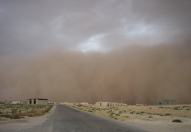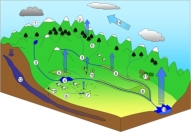Prof. Jason P. Evans
Climate Change Research Centre
University of New South Wales









The CORDEX-Australasia ensemble: evaluation and future projections.
Evans, J.P., G. Di Virgilio, A.L. Hirsch, P. Hoffmann, A. Reca Remedio, F. Ji, B. Rockel and E. Coppola
Climate Dynamics, doi: 10.1007/s00382-020-05459-0, 2020. Abstract
A new regional climate projection ensemble has been created for the Australasia region as part of the World Climate Research
Programs Coordinated Regional Downscaling Experiment (CORDEX). The CORDEX-Australasia ensemble is the largest
regional climate projection ensemble ever created for the region. It is a 20-member ensemble made by 6 regional climate
models downscaling 11 global climate models. Overall the ensemble produces a good representation of recent climate. Consistent biases within the ensemble include an underestimation of the diurnal temperature range and an underestimation of
precipitation across much of southern Australia. Under a high emissions scenario projected temperature changes by the end
of the twenty-first century reach ~5 K in the interior of Australia with smaller increases found toward the coast. Projected
precipitation changes are towards drying, particularly in the most populated areas of the southwest and southeast of the
continent. The projected precipitation change is very seasonal with summer projected to see little change leaning toward an
increase. These results provide a foundation enabling future studies of regional climate changes, climate change impacts,
and adaptation options for Australia.
Key Figure Figure 11. a, d, g, b, e, h historical (1976–2005) and far-future (2070–2099) mean ensemble annual variable extremes; c, f, i ensemble mean cli- mate change signal (far-future minus historical) for variables extremes. Significance stippling (⍺ = 0.05) for the ensemble mean biases follows Tebaldi et al. (2011). Statistically insignificant areas are shown in colour, denoting that less than half of the models are significantly biased. In significant agreeing areas (stippled), at least half of RCMs are significantly biased, and at least 75% of the signifi- cant RCMs agree on the direction of the bias. Significant disagreeing areas are shown in white, and are where at least half of the models are significantly biased and less than 75% significant models agree on the bias direction. |
|